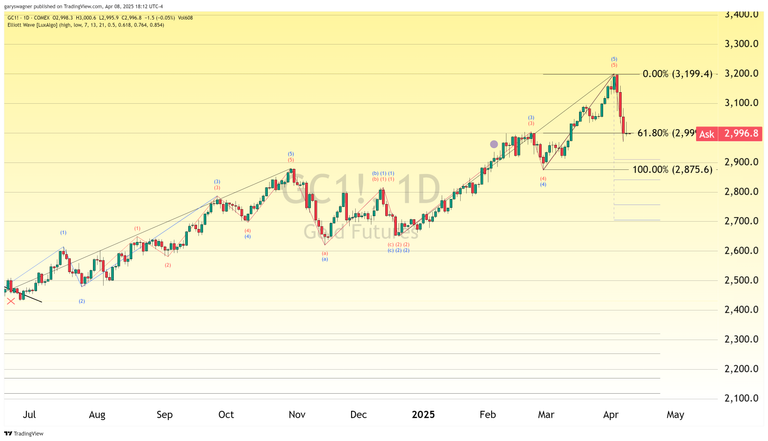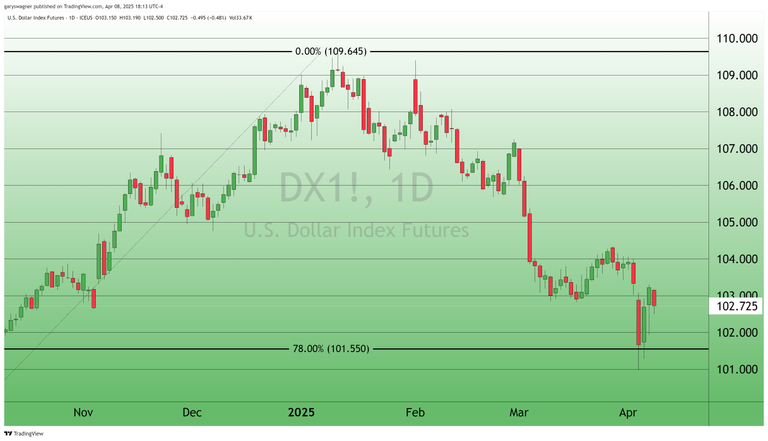Gold prices showed mixed movement in today's trading session as investors navigate the uncertain waters of escalating global trade tensions. The most active June futures contract reached an intraday high of $3,037.90 before settling at $2,998.30, down marginally by $0.50 or 0.02% as of 5:05 PM ET. A weakening U.S. dollar provided some support earlier in the session, helping to limit potential losses as markets prepare for Wednesday's trading open in Australia.

The precious metals market has experienced significant volatility since Thursday, April 3, primarily driven by intensifying trade conflicts. Market turbulence increased today following confirmation from a White House official that the United States will proceed with implementing tariffs of up to 54% on Chinese imports, when combined with Trump's 20% February duties imposed over the U.S. fentanyl overdose crisis. The additional tariffs are scheduled to take effect at midnight tonight.
Last week, President Donald Trump introduced a comprehensive revision to U.S. tariff policy, establishing a minimum 10% import tax on virtually all goods entering the United States. This move represents a fundamental shift in America's approach to international trade.
According to US News, "U.S. President Donald Trump smashed a more than 75-year-old global trading system with a new baseline 10% U.S. tariff on goods from all countries and higher reciprocal tariff rates for countries that his administration says have high barriers to U.S. imports."
The new tariff structure creates a complex web of rates varying by country. While Canada and Mexico are currently exempt from the reciprocal tariffs due to previously imposed 25% fentanyl-related duties, other major trading partners face significant new barriers. The European Union will encounter a 20% tariff rate, while Vietnam faces 45%, South Korea 25%, India 26%, Taiwan 32%, and Thailand 36%.
Imports from Brazil, Singapore, and England will remain subject to the baseline 10% tariff. Notably absent from Trump's elevated tariff list is Russia, despite maintaining a $2.5 billion goods trade surplus with the United States in 2024, according to the U.S. Trade Representative's office.

China, which recorded the largest 2024 trade surplus with the United States at $295 billion, originally faced a 34% tariff on its exports to America. In response, China implemented matching 34% tariffs on U.S. goods. However, now the U.S. will impose a 104% tariff on China beginning at 12:01 a.m. EDT Wednesday, according to White House press secretary Karoline Leavitt.
As these new trade barriers take effect at midnight, investors will be closely watching how gold prices respond. Historically, geopolitical tensions and economic uncertainty have supported gold as a safe-haven asset, but immediate market reactions often prove unpredictable amid complex global economic dynamics.
For those who want additional information on our premium service, Click Here,
Wishing you, as always good trading,

